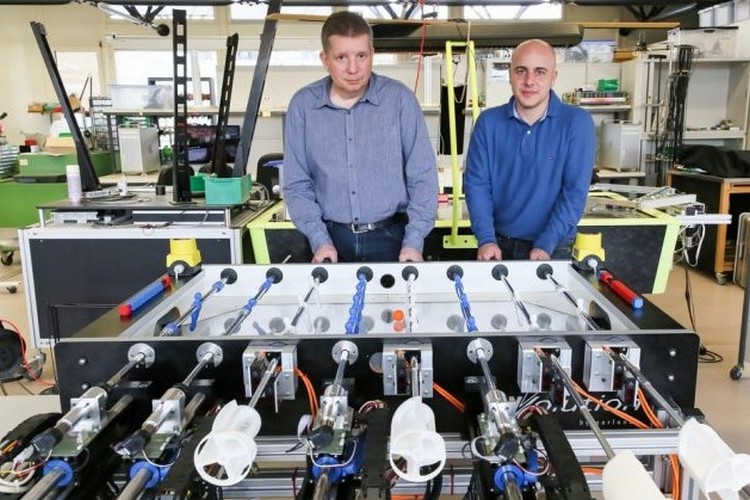Hexagonal electrohydraulic modules shape-shift into versatile robots
Researchers at the Max Planck Institute for Intelligent Systems in Stuttgart combined soft artificial muscles with a rigid, magnetic exoskeleton to create building blocks for fast-moving reconfigurable robots
image: HEXEL modules snap together for a large-stroke muscle and a multi-modal array. view more
Stuttgart – Scientists at the Max-Planck-Institute for Intelligent Systems (MPI-IS) have developed hexagon-shaped robotic components, called modules, that can be snapped together LEGO-style into high-speed robots that can be rearranged for different capabilities. The team of researchers from the Robotic Materials Department at MPI-IS, led by Christoph Keplinger, integrated artificial muscles into hexagonal exoskeletons that are embedded with magnets, allowing for quick mechanical and electrical connections. The team’s work, “Hexagonal electrohydraulic modules for rapidly reconfigurable high-speed robots” will be published in Science Robotics on September 18, 2024.
Six lightweight rigid plates made from glass fiber serve as the exoskeleton of each HEXEL module. The inner joints of the hexagons are driven by hydraulically amplified self-healing electrostatic (HASEL) artificial muscles. Applying a high voltage to the module causes the muscle to activate, rotating the joints of the hexagon and changing its shape from long and narrow to wide and flat.




:focal(1800x1210:0x0)/cloudfront-us-east-2.images.arcpublishing.com/reuters/MYYE4IDMZVLXVLDZRNOVBQGCAU.jpg)














